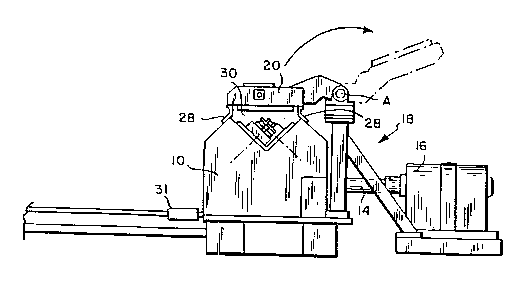Some of the information on this Web page has been provided by external sources. The Government of Canada is not responsible for the accuracy, reliability or currency of the information supplied by external sources. Users wishing to rely upon this information should consult directly with the source of the information. Content provided by external sources is not subject to official languages, privacy and accessibility requirements.
Any discrepancies in the text and image of the Claims and Abstract are due to differing posting times. Text of the Claims and Abstract are posted:
| (12) Patent: | (11) CA 2101481 |
|---|---|
| (54) English Title: | COMBINATION COBBLE COVER AND GUIDE TROUGH FOR ROLLING MILL |
| (54) French Title: | ENSEMBLE COUVERCLE ET AUGE DE GUIDAGE POUR LAMINER |
| Status: | Term Expired - Post Grant Beyond Limit |
| (51) International Patent Classification (IPC): |
|
|---|---|
| (72) Inventors : |
|
| (73) Owners : |
|
| (71) Applicants : |
|
| (74) Agent: | SMART & BIGGAR LP |
| (74) Associate agent: | |
| (45) Issued: | 1996-10-15 |
| (22) Filed Date: | 1993-07-28 |
| (41) Open to Public Inspection: | 1994-06-15 |
| Examination requested: | 1993-07-28 |
| Availability of licence: | N/A |
| Dedicated to the Public: | N/A |
| (25) Language of filing: | English |
| Patent Cooperation Treaty (PCT): | No |
|---|
| (30) Application Priority Data: | ||||||
|---|---|---|---|---|---|---|
|
A rolling mill has a roll stand with work rolls defining a roll pass. The roll stand is
removably mounted at an operative position at which its roll pass is aligned with the mill
rolling line. A cover assembly is configured and dimensioned to cooperate in a closed
position with roll stand to enclose the work rolls. A guide trough is integrally associated with
the cover assembly. The cover assembly is alternatively adjustable from its closed position
to either an open position allowing access to the work rolls when the rolls stand is in its
operative position, or to a guide position at which the guide trough is aligned with the mill
rolling line when the roll stand is removed from its operative position.
Laminoir possédant une cage équipée de cylindres de travail définissant une passe. La cage de laminoir est montée de manière amovible en position de fonctionnement où sa passe est alignée avec la ligne de laminage. Un couvercle est configuré et dimensionné de manière à coopérer en position fermée avec la cage de laminoir pour enfermer les cylindres de travail. Une rigole de guidage est intégrée au couvercle. Le couvercle est, en alternance, réglable de sa position fermée, soit à une position ouverte permettant d'accéder aux cylindres de travail lorsque la cage de laminoir se trouve en position de fonctionnement, soit à une position de guidage dans laquelle la rigole de guidage est alignée avec la ligne de laminage lorsque la cage de laminoir n'est plus en position de fonctionnement.
Note: Claims are shown in the official language in which they were submitted.
Note: Descriptions are shown in the official language in which they were submitted.

2024-08-01:As part of the Next Generation Patents (NGP) transition, the Canadian Patents Database (CPD) now contains a more detailed Event History, which replicates the Event Log of our new back-office solution.
Please note that "Inactive:" events refers to events no longer in use in our new back-office solution.
For a clearer understanding of the status of the application/patent presented on this page, the site Disclaimer , as well as the definitions for Patent , Event History , Maintenance Fee and Payment History should be consulted.
| Description | Date |
|---|---|
| Inactive: Expired (new Act pat) | 2013-07-28 |
| Letter Sent | 2010-12-07 |
| Letter Sent | 2010-12-07 |
| Inactive: IPC from MCD | 2006-03-11 |
| Inactive: Acknowledgment of s.8 Act correction | 1998-04-07 |
| Inactive: S.8 Act correction requested | 1997-08-27 |
| Grant by Issuance | 1996-10-15 |
| Application Published (Open to Public Inspection) | 1994-06-15 |
| All Requirements for Examination Determined Compliant | 1993-07-28 |
| Request for Examination Requirements Determined Compliant | 1993-07-28 |
There is no abandonment history.
Note: Records showing the ownership history in alphabetical order.
| Current Owners on Record |
|---|
| SIEMENS INDUSTRY, INC. |
| Past Owners on Record |
|---|
| LOUIS T. PANACCIONE |